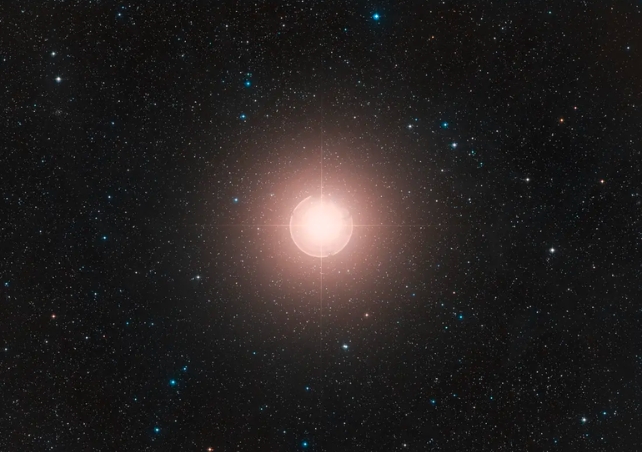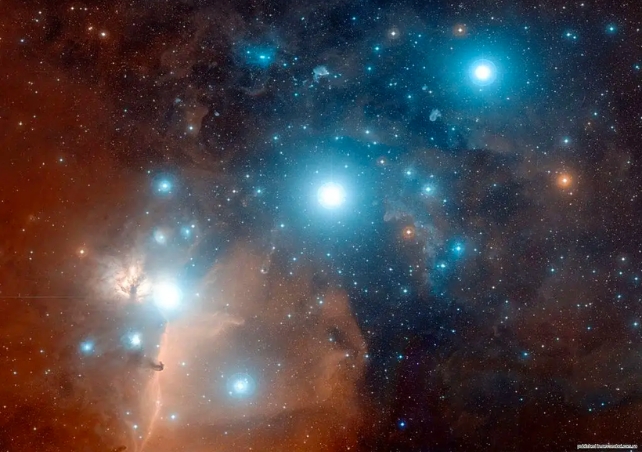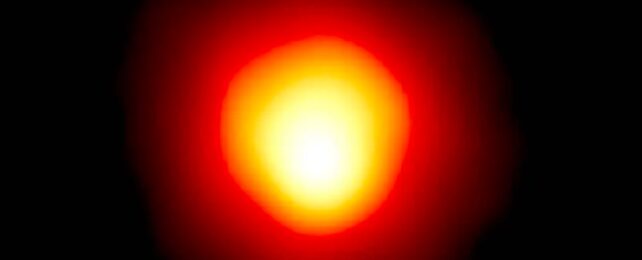Betelgeuse, one of the most visible stars in our skies, has been behaving strangely over the past few years.
The red supergiant, which sits in the constellation of Orion, abruptly dimmed in 2019 causing astronomers to wonder if it was about to explode.
Now, scientists are predicting it will almost disappear from view altogether, albeit briefly, on December 12.
Scientists predict a passing asteroid named 319 Leona will block Betelgeuse's view from Earth for up to five seconds – in the same way as the moon eclipses the sun.
This will be a chance for astronomers to gather crucial information about Betelgeuse (pronounced like the Tim Burton character Beetlejuice) that could help scientists understand the birth of planetary systems.
"This is very exceptional. Basically, it's a once-in-a-lifetime opportunity," astrophysicist Miguel Montargès of the Paris Observatory, told Business Insider on Thursday.

Asteroids pass in front of stars all the time. But they are usually so big that they completely occult the star's light. In the case of 319 Leona, it will be the perfect size to leave a "ring of fire" eclipse that can be seen from Earth.
That means the asteroid will block the brightest of Betelgeuse's light but leave some of its shine to filter through, allowing some of the star's dimmer features to appear to Earth-bound observatories.
This is lucky for those who study stellar physics. At this stage, there is no observatory on Earth that can capture this information without the asteroid's help, Montargès said.
The hope is that the occultation could provide clues about how hot, charged gas moves around the dying star, a process which is referred to as the star's convective cells, said Montargès.
And that is important because it can tell us how planetary systems like ours are born, said Montargès.

"It'll tell us what is the physics behind red supergiants and how they are launching their stellar wind," he added, noting that material from the star could eventually produce a new solar system.
Montargès and his colleagues are coordinating a team of about 80 amateur astronomers around Europe who will turn their telescopes to the sky on the night to gather as much information as possible during the event.
"If we work well during this campaign on if the weather is with us, we should be able to have perhaps an image of the surface of the star in the visible," said Montargès.
"From that we can deduce the characteristics of convection and determine if it can participate in launching the wind of the star," he said.
If you want to participate, you'll have to be within an extremely narrow path, about 60 kilometers (37 miles) wide that should pass through southern Europe to Turkey, Greece, southern Italy, southern Spain, and Portugal, before crossing the Atlantic and crossing the very tip of southern Florida.
You can check whether your location is a good spot for viewing the event on the International Occultation Timing Association's (IOTA) website.
To see Betelgeuse with the naked eye, locate the first three stars that makeup Orion's Belt. You'll then see a reddish star to the left, which is Betelgeuse.
Observers shouldn't expect to see the ring of fire firsthand, as it would require a very powerful telescope to see that much detail in the far-away star. But they can participate in the scientific discovery by filming the star's dimming through their telescopes.
To be scientifically useful, however, you should add a filter, either red, green, or blue, to your observatory, and record the event with a camera with no more than 50 milliseconds of exposure time.
Astronomers should make sure they record their exact latitude and longitude, and ideally should ensure their recordings are timed to the millisecond. This can be achieved by using a GPS-controlled time inserter or using dedicated apps to synchronize the footage.
IOTA is asking that you share your observations with local groups monitoring the event, which can be found on their website.
Those who won't be in those areas can also join in with the fun – the Virtual Telescope Project will be live-streaming the event online from 8 p.m. ET on December 11.
This article was originally published by Business Insider.
More from Business Insider: